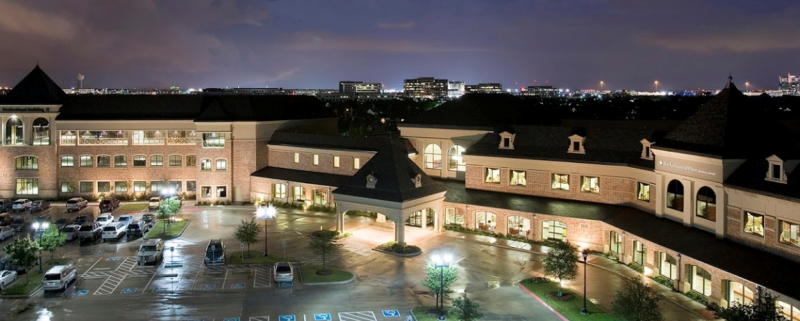Florida And Chicago Investors Team Up To Buy Baylor Scott & White’s Frisco Medical Campus
Two investors have teamed up to buy a Frisco hospital complex.
Chicago-based Remedy Medical Properties and Kayne Anderson Real Estate of Florida have purchased the Baylor Scott & White Frisco Medical Center.
The 161,264-square-foot, 68-bed specialty hospital is at 5601 Warren Parkway, west of the Dallas North Tollway. The medical center is near The Star, the headquarters and training facility of the Dallas Cowboys.
The 7.4-acre campus is fully occupied by Texas Health Ventures Group, a joint venture between Baylor Scott & White and United Surgical Partners International.
Built in 2001, the medical center was previously owned by Nashville-based Healthcare Realty Trust.
“This was an attractive opportunity to secure a fully leased medical center that has a strong growth trajectory in one of the hottest markets in the country,” Joe Magliochetti, chief investment officer for Remedy Medical, said in a statement. “The BSW Frisco Medical Center is performing very well, and is benefiting from a notable increase in outpatient and ambulatory services, with orthopedic care as the primary driving force. In addition, Remedy has existing relationships with Baylor Scott & White and USPI, and we are pleased to be able to further strengthen those relationships through this acquisition.”
The Frisco medical complex includes 11 operating rooms, an emergency department, onsite pharmacy, private rooms and a two-story parking garage. Terms of the purchase were not disclosed.
“The Dallas-Fort Worth region is growing rapidly, and the Frisco market area is the epicenter of that growth,” Antonio Minchella, senior managing director with Kayne Anderson Real Estate said. “Baylor Scott & White is committed to serving the Frisco area through this location. They entered a long-term lease extension prior to the purchase, and are investing in the building to both improve the patient experience and upgrade and enhance surgical capacity.”
Remedy Medical Properties owns almost 30 million square feet of medical real estate in 43 states. The company’s holdings include the Healthcare Associates of Texas medical center in Irving.
Kayne Anderson Real Estate is based in Boca Raton and manages more than $14.5 billion in real estate assets.
Source: The Dallas Morning News




